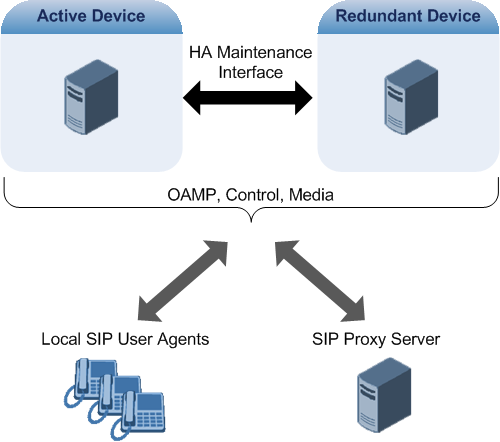Overview
The device's High Availability (HA) feature provides 1+1 system redundancy using two devices
The figure below illustrates the Active-Redundant HA devices under normal operation. Communication between the two devices is through a Maintenance interface, having a unique IP address for each device. The devices have identical software and configuration including network interfaces (i.e., OAMP, Control, and Media), and have identical local-port cabling of these interfaces.

The figure below shows two SBC virtual machines running on different servers to work in an HA configuration:

The physical NICs used by the SBC virtual machine must not share traffic with other applications such as other virtual machines or the hypervisor itself. This also applies to the physical NICs used for the HA link because overloading these NICs may cause false switchovers.